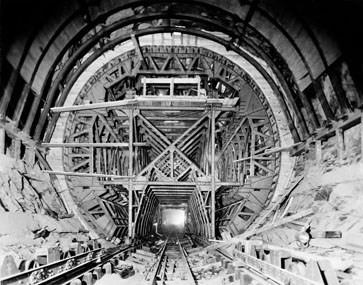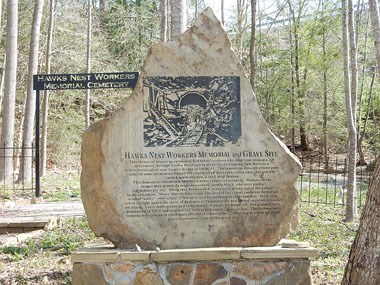
Throughout the years, West Virginia has suffered many tragedies that left hundreds of workers injured or dead. These tragedies are the result of disasters occurring in our coal mines, on our railroads and at industrial facilities like the Hawk’s Nest Tunnel incident. This disaster became one of the worst industrial tragedies in the history of the United States.1 
In 1930, construction began on a three-mile tunnel through Gauley Mountain located between Ansted and Gauley Bridge, West Virginia. When finished, the Hawk’s Nest Tunnel would divert water from the New River to a hydroelectric plant downstream. The water would be used to produce electricity for Union Carbide’s metals plant at Alloy, West Virginia. In order to build the tunnel through solid rock, hundreds of unemployed men were recruited for construction jobs on the project. At least two-thirds of these workers were African Americans. 
The length of employment in the tunnel rarely lasted more than a year. The dangerous working conditions and silica dust rendered many of the men unable to work. Excavation of the Hawk’s Nest Tunnel lead to the greatest death toll ever from silicosis in the United States. Of the approximately 5,000 men that worked on the project, an estimated 2,900 worked inside the tunnel. Of these men, silicosis claimed the lives of at least 764 workers. A majority of the dead were African Americans. In the years after the project was completed, many more would die due to their exposure to silica dust while working in the tunnel. |
Last updated: February 15, 2022
